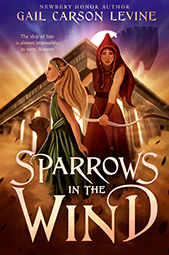![]()
I was nine or ten when I first encountered Greek myths in Mythology, Timeless Tales of Gods and Heroes by Edith Hamilton.
Nowadays I question the book’s title. What about the goddesses, who were just as important as the gods? What about the women and girls, the heroines? For example, there was Thisbe, who may have been Shakespeare’s source for Juliet in Romeo and Juliet. She braves a lion! And let’s remember Atalanta, the hunter and wrestler who brings down the boar that ravages the kingdom of Calydon.

One of the myths I loved was a little known one, about the origins of Achilles’ soldiers, the Myrmidons, who come up in Sparrows in the Wind. The Myrmidons started out as ants! I wonder about that transformation. Did they become big first—gigantic ants—and then human? Or vice versa? Did they understand what had happened to them? Did they enjoy being human?
The myths were like fairy tales to me—all action and never a dull moment. The myth of Cupid and Psyche even has the same basic plot as the fairy tale “East of the Sun, West of the Moon,” and it’s similar to “Beauty and the Beast.” Creatures like Cerberus, a three-headed dog, and the Minotaur, a bull-human combo, populate myths, as fairies, ogres, and dragons inhabit fairy tales.
Neither myths nor fairy tales in their original form reveal the minds and hearts of their characters the way modern novels do. In the myth of Cassandra, she’s a tragic figure because she foresees the fate of Troy, the people she loves, and her own murder, and no one believes her warnings. The myth tells us she’s sad, but nothing else. What does she think? What kind of person is she? What does she do? What can she do?
In Sparrows in the Wind, I consider these questions.
